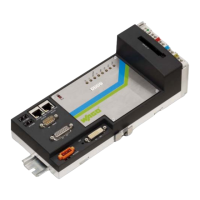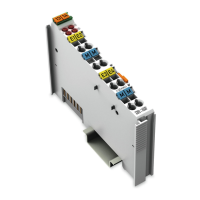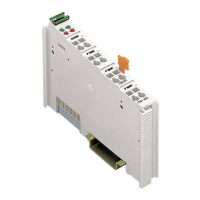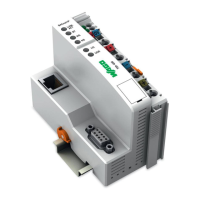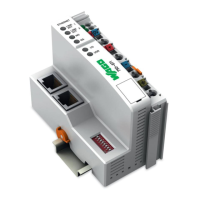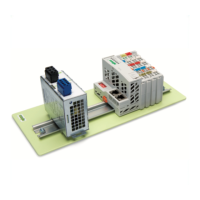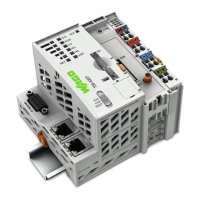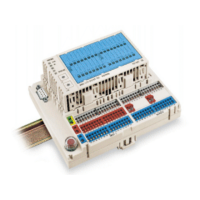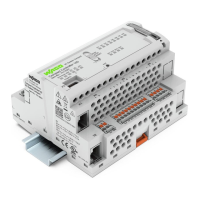
Do you have a question about the WAGO Compact Controller 100 and is the answer not in the manual?
| Model | WAGO Compact Controller 100 |
|---|---|
| I/O System | Modular |
| Digital Outputs | 16 |
| Communication Interfaces | Ethernet, RS-232, RS-485 |
| Power Supply | 24 V DC |
| Operating Voltage | 24 V DC |
| Protection Class | IP20 |
| Programming | CODESYS V3 |
| Analog Outputs | 2 |
| Operating Temperature | -20 … +60 °C |
| CPU | ARM Cortex-A8 |
| Data Memory | 256 MB |
Specifies the applicability of this documentation to the Compact Controller 100.
Details the copyright protection and usage restrictions for this manual.
Lists third-party trademarks used and notes on property rights.
Explains the meaning of symbols used in the manual for warnings and notices.
Describes the conventions for number notation used throughout the manual.
Explains the meaning of different font types used in the manual.
Covers legal aspects including subject to changes and personnel qualifications.
Provides essential safety precautions for installing and operating the device.
Details the license terms for the software packages used in the controller.
Outlines special conditions and recommendations for using ETHERNET devices securely.
Provides a detailed description of the controller's hardware components and layout.
Illustrates the controller's internal structure and connections via a schematic diagram.
Lists detailed technical specifications covering mechanical, system, power, and operational data.
Lists the various approvals and certifications granted to the controller.
Describes network configuration, interface management, and connectivity options for the controller.
Details the functionality and usage of the memory card for storage and backup.
Details the permitted installation positions and their corresponding ambient temperature limits.
Explains how to mount components onto a carrier rail, including rail properties.
Specifies the minimum distance requirements for cable ducts and housing/frame walls.
Provides instructions on inserting devices, including the controller and picoMAX® connectors.
Explains the grounding procedure for the controller via the DIN-rail.
Provides instructions for connecting ETHERNET devices and other peripherals.
Details how to connect the power supply to the controller using the specified connector.
Describes the steps and checks required before and during the controller's initial power-up.
Explains how to find the host PC's IP address for network communication.
Covers methods for setting the controller's IP address, including DHCP and static configuration.
Details how to perform a network connection test using the ping command.
Provides instructions on how to change default passwords for enhanced security.
Explains the correct procedures for shutting down and restarting the controller.
Describes how to perform warm start, cold start, software, and factory resets.
Covers the methods for configuring the controller, including firmware updates and network settings.
Provides general notes and refers to CODESYS V3 documentation for detailed information.
Lists the implemented priorities for the controller within the CODESYS 3 environment.
Details the sizes of program, data, and remanent memory spaces available in the controller.
Describes how analog and digital inputs/outputs are represented in the process image.
Explains the operating and status messages indicated by the controller's LEDs.
Provides step-by-step instructions for inserting and removing the memory card.
Details the procedures for updating or downgrading the controller's firmware.
Explains how to update the root certificates for secure communication.
Provides instructions on how to safely remove devices, including the controller, from the DIN-rail.
Outlines proper disposal procedures for electrical and electronic equipment according to regulations.
Describes guidelines for the reuse and environmentally friendly disposal of packaging materials.
Lists recommended tools, emphasizing the use of insulated tools for safety.
Details various configuration dialogs within the Web-Based Management (WBM) interface.
